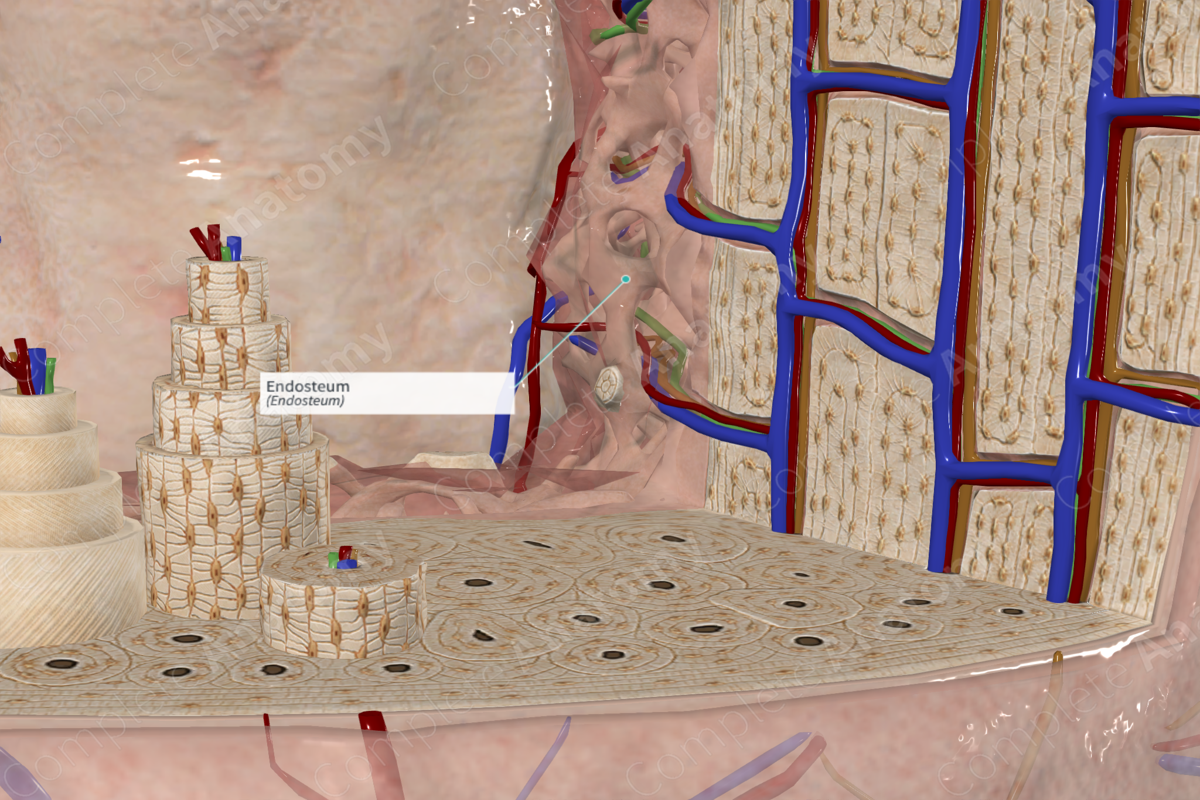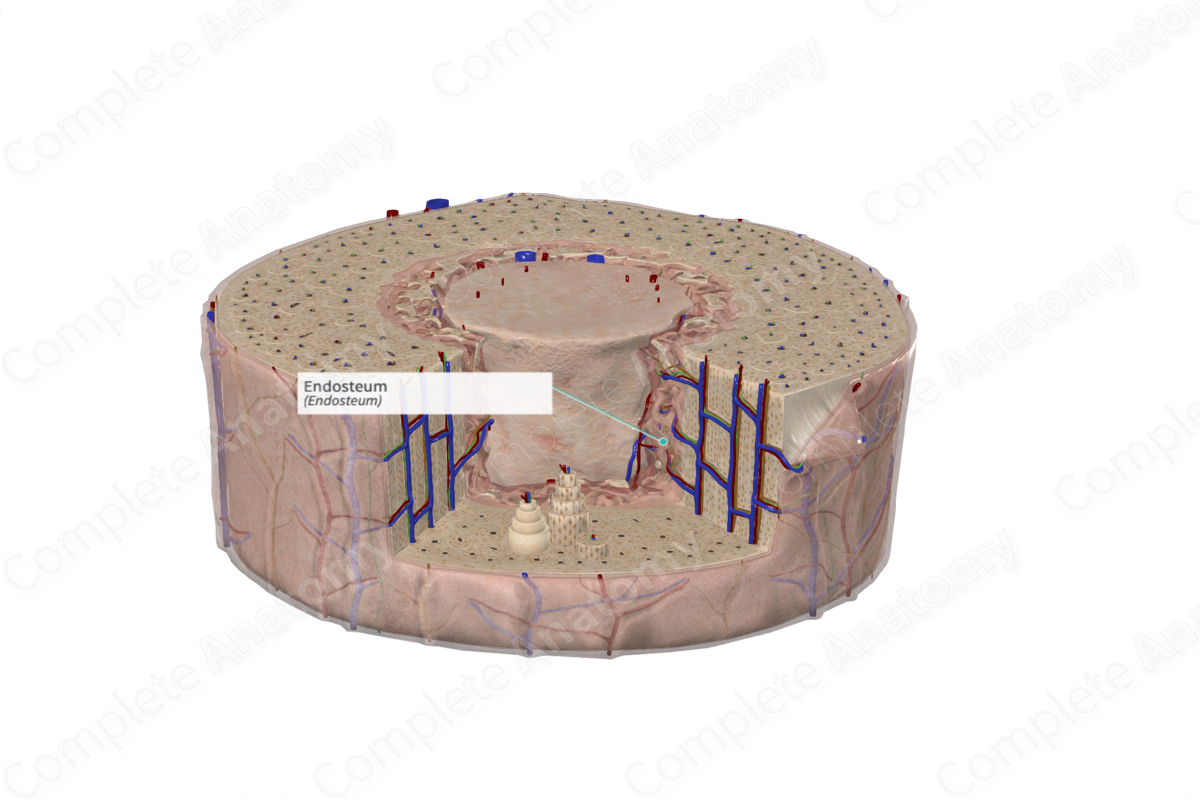
Quick Facts
The endosteum is the tissue lining all inner aspects of the bones, including the medullary cavity (Dorland, 2011).
Related parts of the anatomy
Structure/Morphology
The endosteum is a thin osteogenic layer that is lined with osteoblasts and precursors to osteoblasts. In times of inactivity, these cells are flat and are not easy to distinguish from each other. Upon activation, osteoblasts become cuboidal and are capable of producing osteoid which forms new lamellar bone.
Anatomical Relations
The endosteal layer is a thin but expansive layer. It covers all the trabeculae of the spongy bone along with the inner cortical surface from which the trabeculae are attached to. It also invaginates the perforations that allow the passage of blood vessels and continues into the cortical bone where it lines the perforating canals (Haversian and Volkmann’s canals) (Standring, 2016).
Function
The two osteogenic layers, the endosteum and periosteum, are responsible for the balance of bone deposition and resorption. Bone resorption is often greater than bone deposition and thus the marrow cavity expands as we age.
References
Dorland, W. (2011) Dorland's Illustrated Medical Dictionary. 32nd edn. Philadelphia, USA: Elsevier Saunders.
Standring, S. (2016) Gray's Anatomy: The Anatomical Basis of Clinical Practice. Gray's Anatomy Series: Elsevier Limited.

